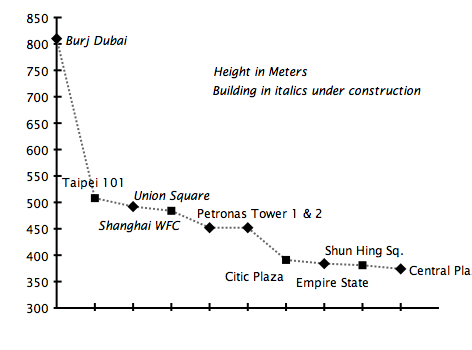"Singapore Flyer" holds the title for being the World's largest Giant Observation Wheel, but it will not stay long as China is building the "Beijing Great Wheel" scheduled opening on the end of 2009.Literature:source: http://www.gostructural.com/article.asp?id=2753In March—115 years after the giant, steel-tension wheel built by American structural engineer George Ferris debuted at the 1893 World's Fair in Chicago—an observation wheel nearly twice that size opened to the public. At a height of 165 meters, the waterfront Singapore Flyer has entered the record books as the tallest circulating wheel in history. Its developers look for the Flyer to become a tourist attraction on the order of the 135-meter-tall London Eye in England, the world's previous tallest wheel titlist. During its seven-year existence from 2001 until 2008, the Eye has become one of London's top visitor destinations—on par with Big Ben, Buckingham Palace, and the Tower of London—carrying 3.5 million passengers per year.
The Singapore and London wheels are both spider-web-looking, structural-steel tension wheels inspired by Ferris' invention, although more streamlined. They feature air-conditioned passenger capsules on the outer rim of the wheel's circumference. Because of these refinements—and the fact that the London eye is cantilevered off a single support tower rather than built between two supports like the 1893 Chicago wheel structure—the British claim their wheel is
not a Ferris wheel. Rather, it's a new type of "observation wheel." (No need to credit an American with being the first at anything, right?)
Whether the grand Singapore wheel will diminish the luster of London's wheel or be as popular remains to be seen. However, the Singapore structure will not hold the record for long. Currently under construction is an even bigger "Ferris wheel" to open in Beijing, China, in 2009. Called the Beijing Great Wheel, it will rise to 208 meters. In reference to the structure, reporters like Ben Blanchard of Reuters are already coining such phrases as "You've climbed the Great Wall of China, now Beijing wants you to 'fly' the Great Wheel of China."
It may be coincidence, but facts are facts. Two of the world's most pacesetting structural innovations—the Ferris wheel and skyscrapers—began in the United States in the city of Chicago. Both structural types instigated today's global quest to outdo one's neighbor by building increasingly higher observation/pleasure-wheel structures and taller buildings. The two daring, 19th-century American structural engineers responsible for these construction record-setters—both using structural steel for the first time—were Pittsburgh-based Ferris and Chicago-based William Jenny, designer of the 1885 Home Insurance Building, the world's first skyscraper.
It's sad that neither icon still stands; both victims of the wrecking ball and
progress. The Ferris wheel's demise is especially poignant. At the time of its invention, engineers in the United States were challenged to come up with something to out-Eiffel engineer Gustave Eiffel's Eiffel Tower—the sensation of the 1889 World's Fair in Paris. Ferris' response to the challenge, like Eiffel's structure, became the star of the show. Unlike the Eiffel Tower, it was removed right after its fair closed, then demolished. Fortunately, a smaller duplicate of it (a 61-meter-diameter wheel) was built and unveiled in Prather Park in Vienna, Austria, two years later. It still operates—an attribute to American ingenuity.
Even though taller passenger wheels like the Singapore Flyer are overshadowing the original 76-meter-diameter Chicago wheel, none have broken its carrying capacity: 36 carriages holding 60 people for a full load of 2,160 people per revolution. In contrast, the London Eye has 32 capsules that hold 25 for a total of 800 passengers; the Singapore Flyer has 28 capsules carrying 28 people for a total of 784; and the Great Wheel will have 48 capsules carrying 40 for a total load of 1,920 per revolution.
Although each giant observation wheel being built today could be considered a tribute to what Ferris and America's great Chicago World's Fair produced, it's a shame that no suitable reminder remains within the United States to commemorate Ferris' remarkable 19th-century engineering feat.
The Design:Source: http://www.ieaust.org.sg/Flyers/singapore_flyer.pdf




